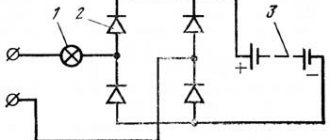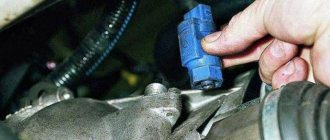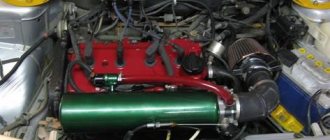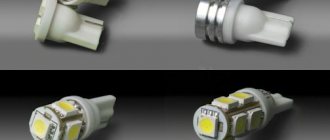This article will talk about how to care for car batteries. Many drivers do not attach due importance to battery care, and as a result, they experience such troubles as a decrease in battery capacity and a shortened service life, up to irreversible damage.
Car battery care becomes especially important during the winter season. If this matter is handled poorly in winter, then a car can actually become a useless piece of metal from a means of transportation that cannot be started.
It is in winter that unpleasant things happen, such as being late for an important business meeting or work due to a damaged battery. But the root of the evil lies on the surface - the driver did not attach due importance to caring for the battery in winter. If you take care of it properly throughout the year, the battery can work quite effectively for at least 7 years.
Therefore, it makes sense to once again emphasize the following - if the battery is cared for regularly, then it will serve for a long time and without failure. Otherwise, you only have yourself to blame. In 90% of cases, it is the battery that determines whether the car will start or not.
What types of batteries are there?
Serviced
Batteries of this type have so-called filler plugs. These plugs are used to control the density of the electrolyte, as well as to check the current level. If you care for a car battery of this type skillfully and regularly, it can serve without fail for quite a long time. However, every year the production of batteries from this group is constantly declining.
Out of service
These batteries do not require continuous monitoring of the electrolyte level and its maintenance as it is consumed. Features of this group of batteries include the presence of a special valve for removing gases and the possibility of periodic recharging. The majority of batteries available on the market today belong to this group.
In winter, many car owners begin to seriously “torment” batteries in order to start the engine of their car. However, the battery is not always the reason why a car won't start. This depends on a number of other factors, such as the quality of engine oil, gasoline, the condition of the glow plug, etc. Therefore, first it is better to find out the reason for the stubbornness of the “car”, and not to continue to drive the battery.
Battery care and testing Mitsubishi Lancer 9
Auto News
Subaru will update two models in Russia in 2021
As Autonews.ru writes with reference to a representative of the Subaru company, next year two new products from the Japanese brand will appear in our country.
Thus, in the first half of 2021, an updated version of the Subaru XV crossover will arrive on the Russian market. 06 Sep 2020 05:50:26 +0000
From exterior to prices: We talk about the new GAC GS5
The Chinese crossover will delight you with its appearance and interior, but will disappoint you with its price and lack of all-wheel drive. The editors of Pokatim.ru decided to talk in detail about the new GAC GS5 2020. “Exterior”, like the Tiguan. The car looks dynamic and balanced and has much in common with the VW Tiguan.
06 Sep 2020 09:24:59 +0000
Ulyanovsk Automobile Plant patented three new engines
Information has appeared on the Internet about three new modifications of the ZMZ-409 gasoline engine, which were patented by the Ulyanovsk Automobile Plant.
04 Sep 2020 17:32:06 +0000
AvtoVAZ will continue supplying vehicle kits to the Ukrainian ZAZ
The Russian AvtoVAZ has decided to continue supplying its cars to the Ukrainian ZAZ. As noted by users of the AvtoVAZ News community on the Internet, supplies of sedans have already been established, and now Granta liftbacks are also being prepared for transportation.
06 Sep 2020 08:57:16 +0000
Opel presented the new generation Mokka crossover
The German automobile giant Opel has officially launched the improved Opel Mokka SUV. The main advantage of the car was its improved engine in different versions. In addition, buyers will be able to choose models in the sporty GS Line version.
03 Sep 2020 07:59:00 +0000
Honda and GM decide to create a strategic alliance in North America
American General Motors and Japanese Honda Motor have begun to create an alliance that will operate in North America. To this end, on Thursday, September 3, the companies signed a memorandum of understanding.
04 Sep 2020 06:22:39 +0000
Dacia showed Sandero, Sandero Stepway and Logan 2021 in teasers
The Dacia brand, owned by Renault, showed the first teasers of the next generation Logan sedan, as well as the new Sandero hatchback and its off-road modification Sandero Stepway for the 2021 model year.
06 Sep 2020 03:15:51 +0000
Preferential car loan programs will be extended in Russia for 2021
State programs that will help stimulate demand for Russian-made cars are planned to be extended into 2021. This was reported by TASS with reference to the Deputy Head of the Ministry of Industry and Trade of Russia Alexander Morozov.
06 Sep 2020 05:34:19 +0000
AvtoVAZ announced prices for the new Lada Largus Cross Quest
Sales of a special version of the off-road Lada Largus Cross called Quest have started on the Russian market. As the New Cars portal found out, cross-station wagons in the Quest version, which differ from the standard versions in a number of additional options, were handed over to the first customers the day before.
06 Sep 2020 02:53:39 +0000
New car sales in Russia fell by 0.5% in August
In total, buyers purchased 137,517 cars in August, which is 722 (-0.5%) cars less than in the same month of 2020. In just 7 months from January to August, 880.1 thousand cars were sold, which is 178.4 thousand cars (-16.9%) less than during the same period in 2020.
05 Sep 2020 12:28:41 +0000
The UAZ company demonstrated the unusual design of the UAZ “Loaves”
Images of the new generation of UAZ “Loaves” have appeared online. As reported on the Auto News of the Day website, the images were demonstrated by the Ulyanovsk Automobile Plant.
06 Sep 2020 07:20:52 +0000
Keeping it clean
The surface of the battery must always be clean and this must be carefully monitored. Pay attention to the terminals - they should not be covered with a layer of dirt or an oxide film.
If a battery is used for a long time, its terminals very often become oxidized. The resulting plaque has a high ohmic resistance and is a poor conductor of electric current. For this reason, it should be cleaned using sandpaper and ammonia.
Also, in batteries of a non-maintenance type, the gas outlet hole is often clogged. If this is discovered during visual inspection, then the hole needs to be cleaned. Otherwise, the accumulated gases will damage the battery case.
Fixing the terminals
The battery terminals should always be securely secured. If they are not clamped well, then when overcoming some bump, the battery may become disconnected and the car will simply stall.
This is an extremely dangerous situation that leads to a number of other troubles. For example, deterioration in brake performance or steering wheel locking. If this happens while driving, an uncontrolled or poorly controlled vehicle can cause a serious accident. Therefore, before the trip, it is highly advisable to verify the quality of the terminals.
Electrolyte check
If the battery is serviceable, then the car owner can easily control the electrolyte filling. If the level has decreased to a critical level, then the efficiency of the battery decreases significantly. Especially in cold winter.
What to do if the volume of electrolyte has decreased significantly? Then you need to top up the battery with distilled water. But there is one caveat here - when topping up the battery with distilled water, its charging time will increase noticeably. Also, do not fill the battery with more liquid than necessary.
Battery storage
- If you are going to put the car in the garage for the entire cold period of the year, then the battery should be removed and stored in a warm place. Long-term exposure of a battery to negative temperatures can reduce its capacity and shorten its service life.
- When you put the battery away for storage, you need to pay great attention to securely fixing the terminals. If the contact is poor, problems may arise with starting the car, because the required charge from the battery will not flow.
- Check monthly how the wires are secured to the terminals and, if necessary, tighten the clamps so that the connection is stationary.
- Maintained batteries require regular checking of the electrolyte condition. If the level becomes a little lower, you need to add distillate. But in cases where the electrolyte level has dropped by half or below, most likely the battery has mechanical damage, which has resulted in a loss of seal and is dangerous for further use.
How to properly store a battery in winter?
It often happens that a car owner practically does not use his “iron horse” in winter. If you do the same, then do not neglect the most important rule of caring for your battery in winter - remove it from the car and store it in a heated room with a low humidity percentage.
If the battery is exposed to air with sub-zero temperatures for a long time, then all its important technical characteristics will certainly suffer.
The battery will begin to hold a charge poorly or will be completely discharged. This often causes complete failure of the battery.
But even in storage mode, the battery needs to be recharged periodically. This should be done at least once every three months. This measure will ensure that all battery performance characteristics are maintained at the proper level.
How to properly charge a car battery?
Undoubtedly, charging or maintaining an optimal charge level is central to car battery care. That is why proper charging of the battery stands apart in the chain of care rules. She had to highlight a separate solid paragraph of text.
In fact, there is nothing complicated in charging a battery, but nevertheless, most car enthusiasts do it incorrectly. Oddly enough, theoretically everyone knows how to charge, but the practical side of the action is a real problem. In a working car, the function of recharging the battery falls on the generator. If not for him, the battery would have died after just a few hours of travel.
The need to use a battery charger arises due to the latter being deeply discharged as a result of improper use or prolonged non-use. That is why every respectable motorist should have a battery charger on hand.
The choice of battery chargers is wide and varied. There are various models on sale, differing in price and workmanship. It is best to buy a charger in the middle price range.
The procedure for charging a car battery is as follows:
1.Remove the battery from the car and move it to a heated room if the operation takes place in winter;
2. Correctly connect the charger to the battery. Be sure to check the instructions;
3.Before connecting the charger to the electrical network, you must once again make sure that the connection is correct;
4. Do not leave the battery charging unattended for a long time. You need to be able to constantly monitor the process;
5.After charging the battery, the charger is disconnected from the network;
6. When disconnecting the charger from the battery, the negative contact is disconnected first.
At this point, the battery charging process can be considered complete. There is nothing complicated in principle. The most important thing is to be attentive, follow the instructions and be careful.
What can you do to please your battery?
According to experts, one of the most vulnerable elements of the electrical system of any vehicle is the DC source. This means in practice: in order for the electrician not to fail, you need to clearly know the rules for caring for it.
- In order for the power supply to last longer, careful and regular checking of the charge and electrolyte levels is necessary. It is advisable to regularly measure the density of the electrolyte using a hydrometer.
- The battery must be kept clean. It should not come in contact with gasoline, engine oil or antifreeze. From the surface of the power supply and terminals, you need to periodically sweep away dust using a dry rag or soft brush.
- It is important to securely secure the battery in the engine compartment, as it can be severely damaged or completely destroyed if removed from its mountings.
- Long battery life is achieved by properly charging the battery. The key to success in this case is a reasonable choice of charger, which will be discussed below. The charging parameters recommended by the battery manufacturer must not be violated, which may cause accelerated evaporation of the electrolyte. This not only negatively affects the condition of the battery, but can also cause poisoning with harmful fumes.
Rules for caring for lead-acid batteries
Batteries are resistant to deep discharge, but storing them in a discharged state will lead to their damage.
Remember: after the battery is discharged, it must be charged immediately!
Compliance with the rules of battery operation will allow you to extend their service life and, as a result, ensure the duration of operation of uninterruptible power supplies in reserve mode.
Lead-acid batteries , the most common type of battery today, were invented in 1859 by the French physicist Gaston Plante. Sealed lead-acid batteries , which appeared on the Russian market in the early 90s, quickly gained popularity among users and developers, especially in the field of redundancy of various systems.
The advantages of these batteries are obvious: - tightness, lack of harmful emissions into the atmosphere, which allows them to be used in naturally ventilated rooms where people are located; — electrolyte replacement and water addition are not required; — possibility of operation in any position; — resistance without damage to deep discharge; — low self-discharge (less than 0.1%) of the nominal capacity per day at an ambient temperature of plus 20°C; — maintaining operability for more than 1000 cycles of 30% discharge and over 200 cycles of full discharge; — the ability to store in a charged state without recharging for two years at an ambient temperature of plus 20°C; — the ability to quickly restore capacity (up to 70% in two hours) when charging a completely discharged battery; - ease of charging; — when handling the products, no special precautions are required, since the electrolyte is in a “bound” state (there is no acid leakage if the housing is damaged).
The operating principle of lead-acid batteries is based on the electrochemical reactions of lead and lead dioxide in a sulfuric acid environment. During the discharge, lead dioxide is reduced at the cathode and lead oxidized at the anode. During charging, reverse reactions occur, to which at the end of the charge is added the reaction of electrolysis of water, accompanied by the release of oxygen on the positive electrode and hydrogen on the negative
Sealed, maintenance-free batteries use the principle of gas recombination through the oxygen cycle, as a result of which the oxygen and hydrogen released inside the battery are recombined to form water. In lead-acid batteries, this reaction is possible due to the use of a “bound” electrolyte, which has pores inside that allow gas ions to move freely from one electrode to another.
There are two main methods of “binding” electrolytes: Absorptive Glass Mat (AGM) - a porous filler is used that has such a design that, impregnated with liquid electrolyte, it has unfilled pores, which are used for the process of gas recombination. Used for the manufacture of sealed batteries (addition of water is excluded). Gelled Electrolite (GEL) – silicon dioxide SiO2 is added to the electrolyte and after a few hours the electrolyte becomes jelly-like, which leads to the formation of unfilled shells and pores, the space of which is used for the process of gas recombination. Used for the manufacture of sealed batteries (addition of water is excluded).
Battery characteristics
One of the main characteristics is the battery capacity - C (the product of discharge current A and discharge time h). The nominal capacity (the value indicated on the battery) is equal to the capacity that the battery provides during a 20-hour discharge to a voltage of 1.75 V on each cell. For a 12-volt battery containing six cells, this voltage is 10.5 V. For example, a battery with a nominal capacity of 7 Ah provides operation for 20 hours at a discharge current of 0.35 A. When calculating the battery operating time at a discharge current different from 20-hour, its actual capacity will differ from the nominal one. Thus, with a discharge current of more than 20 hours, the actual battery capacity will be less than the nominal one (Figure 1).
Figure 1 - Dependence of battery discharge time on discharge current
Determination of reserve time depending on the load current, temperature and battery capacity
The battery capacity also depends on the ambient temperature (Figure 2).
Figure 2 - Dependence of battery capacity on ambient temperature
Batteries are mainly produced in two ratings: 6 and 12 V with a nominal capacity from 1.2 to 200 Ah.
When operating batteries, it is necessary to comply with the requirements for their discharge, charging and storage.
When discharging the battery, the ambient temperature must be maintained within the range from minus 20 (for some types of batteries from minus 40 ° C) to plus 50 ° C. Such a wide temperature range allows the battery to be installed in unheated rooms without additional heating. It is not recommended to subject the battery to a so-called “deep” discharge, as this can lead to its damage. Table 1 shows the values of the permissible battery discharge voltage for various discharge current values.
Get full text
Table 1
| Discharge current, A | Allowable discharge voltage, V/cell |
| 0.2 C or less | 1,75 |
| From 0.2 C to 0.5 C | 1,70 |
| From 0.5 C to 1.0 C | 1,55 |
| From 1.0 C or more | 1,30 |
The battery should be charged immediately after discharge. This is especially true for batteries that have been subjected to a “deep” discharge. If the battery is in a discharged state for a long period of time, then a situation is possible in which it will be impossible to fully restore its capacity.
To obtain voltage ratings above 12 V (for example, 24 or 36 V and higher), used for equipment redundancy, a series connection of several batteries is used. In this case, the following rules must be observed:
- It is necessary to use the same type of battery, produced by the same manufacturer. It is not recommended to connect batteries with a manufacturing date difference of more than 1 month. It is necessary to maintain the temperature difference between batteries within 3 ° C. It is recommended to maintain the required distance (10 mm) between batteries.
It is allowed to store the battery at an ambient temperature from minus 20 to plus 40 °C. Batteries supplied by manufacturers in a fully charged state have a fairly low self-discharge current, however, with long-term storage or using a cyclic charging mode, their capacity may decrease (Figure 3).
Figure 3 - Dependence of changes in battery capacity on storage time at different temperatures
Legend: _____ lead-acid sealed battery; traditional lead-acid battery (open type).
During storage, it is recommended to recharge the battery at least once every 6 months.
The battery can be charged at ambient temperatures from 0 to plus 40°C. When charging a battery, you should not place it in a hermetically sealed container, as gases may be released (when charging with a high current).
Selecting a charger
The need to choose the right charger is dictated by the fact that excessive charging will not only reduce the amount of electrolyte, but will lead to rapid failure of the battery cells. Reducing the charge current ensures high-quality battery charging, but at the same time leads to an increase in charge duration, which is not always desirable, especially when backing up equipment at sites where power outages often occur. Battery life depends significantly on charging methods and ambient temperature (Figures 4, 5, 6).
Figure 4 - Dependence of battery life on ambient temperature
Buffer charge mode
In buffer charging mode, the battery is always connected to a DC source. At the beginning of the charge, the source works as a current limiter, at the end (when the voltage on the battery reaches the required value) it begins to work as a voltage limiter. From this moment, the charging current begins to drop and reaches a value that compensates for the self-discharge of the battery.
Cyclic charge mode
Cyclic charging mode charges the battery and then disconnects it from the charger. The next charge cycle is carried out only after the battery is discharged or after a certain time to compensate for self-discharge.
If the car is laid up
The procedure for caring for a maintenance-free battery is simple. However, following this procedure can significantly extend battery life.
Before storing the battery, ensure that it is fully charged. During storage, it is necessary to maintain temperature conditions without thermal shock. It is advisable to recharge once every two weeks.
When the car is parked outside or in an unheated garage in winter, it is advisable to disconnect the ground of the battery (minus terminal). In very severe frosts, the most reliable way to take care of the battery is to remove it from the car and store it in a warm room at room temperature.
To prevent a short circuit, it is necessary to ensure that the battery is not exposed to conductive materials, metal objects, water, dirt, etc.
Before storing the battery, you need to check the electrolyte level. If it is insufficient, you need to add distilled water and recharge the battery.
It is not advisable to drain the electrolyte, as this will damage the battery. To maintain the density of the electrolyte, do not pour concentrated acid. Such actions may cause the battery to lose its working condition.
Both electrolyte and dry-type batteries should be stored in ventilated areas with low humidity. Avoid exposing batteries to direct sunlight.
contents .. 41 42 ..4.2.3.
Preparation of cooling water and maintenance of batteries of industrial electric locomotives and traction units
Preparation of cooling water. In industrial transport, water for the cooling system of diesel sections of traction units is prepared in a special water preparation department at an outfitting point or in the depot of an industrial enterprise. Based on physical and chemical properties, water is prepared in two compositions due to the need to meet the requirements for locomotives with both cast iron and steel diesel blocks and aluminum ones.
The department has three tanks with a capacity of 180 liters each, one of which is for collecting condensate, the other two are for preparing and dispensing water of two compositions. In those outfitting points where cooling water of the same composition is consumed, the third tank is used as a reserve or as an additional container for cooling water.
Cooling water is prepared from condensate entering the tank from the hot water supply system. Each tank has a coil into which steam is supplied to maintain the required temperature. The finished cooling water is pumped to the point of consumption. The tanks are equipped with water indicator glasses with calibrated slats, sludge drainage valves and thermometers.
Daily cooling water consumption, l, per locomotive is as follows.
Traction units OPE1, OPE1A, OPE1B…. b
Traction unit EL10……………………..3
Electric locomotives EL2, 1UKP……………………3
Battery care. Regular monitoring of the condition of batteries largely determines the normal operation of locomotives. During equipment, it is necessary to check the level and density of the electrolyte in each element, as well as operability under load. For this purpose, the equipment station has an ereometer and a load fork. Since electrolyte evaporates during battery operation, it is necessary to periodically top up the cells to obtain the specified density.
batteries distilled water. Electrical distillation is expensive, so to prepare the electrolyte, deeply demineralized (chemically pure) water obtained by iont desalting is used.
Industrially produced installations for deep desalting have a capacity of 50-150 d/h. A diagram of such an installation is shown in Fig. 4.4. The principle of its operation is as follows: tap water is supplied to ion exchange filters under the pressure of the water supply network, the optimal flow rate is 180-200 l/h.
It is necessary to prepare and store acid electrolyte and acid in special rooms, isolated from similar rooms for alkaline electrolyte. Electrolyte is supplied to locomotives in special cans.
Rice. 4.4. Installation diagram for deep water desalination: I—IV — columns (filters); 1—22 — shut-off valves
contents .. 41 42 ..
What to do if the car won't start?
In the cold season, DC sources discharge much faster than in summer. Therefore, it is necessary to take into account the peculiarities of caring for a battery in winter. Taking them into account is especially important, since loss of charge can lead to stalling on the road and making it difficult to start the engine.
In the conditions of the middle zone, it is more correct in winter to take preventive actions related to regularly checking the condition of the battery before leaving, as well as timely recharging or replacement.
The most common ways out of this situation are: “lighting up” from the battery of another car, taking a stalled car in tow, and, finally, pushing the car manually.
For vintage cars (Pobeda, GAZ-21, Moskvichi 401, 402, ... up to 408) there is another, now forgotten, means for starting the engine in winter with a dead battery - a crank, which after considerable work could give a positive result.
It is advisable to insulate the engine compartment and the battery itself with non-flammable thermal insulation materials. Previously, there was a practice when some drivers wrapped batteries with warm blankets or quilted jackets. However, the slightest spark can cause a fire, so this method of insulation is strictly not recommended.
Let us especially note that in the conditions of the Far North during the cold months, vehicle engines are not turned off at all, i.e. when parked they are driven at idle speed. In this case, the machines are constantly operational, since they are in a heated state, and their batteries are continuously recharged.
A visual representation of how to care for your battery in winter is shown in the video below.
How to care for your battery
There are these types of batteries:
- ➡ suitable for repair - they do not have a top cover, to make it possible to replace the plates, the sections are covered with resin, they are almost never produced;
- ➡ low-maintenance – the ability to control and adjust the electrolyte level;
- ➡ maintenance-free - charged and filled at the factory, there is no possibility of access to the core, with stable operation of the equipment there is no need to add distilled water.
Caring for the battery device is easy.
It is necessary to constantly check the electrolyte level. This is a mixture of concentrated sulfuric acid and distilled water. In a working battery, the electrolyte is transparent. Foreign impurities give it turbidity. This could be tap water with a high content of iron or chlorine. Cloudy electrolyte indicates battery replacement. A low electrolyte level indicates overcharging, which most often indicates damage to the generator. In warm weather, the battery can still last for some time, but when it gets colder, it will quickly fail.
The terminals must be kept clean and well tightened.
It is recommended to fully recharge the battery at least twice a year with a special charger.
Never replace the battery while the engine is running.
The winter period is characterized by increased use of battery devices due to the greater use of side lights, constantly turned on headlights, and heating of the car interior. In winter, you can damage the battery by cranking the engine for more than 15 minutes; the battery plates can melt, causing a loss of energy capacity and deteriorating performance.
In order for winter performance to be at its best, you need to: ➡ clean the terminals from various oxides; ➡ wipe before storage from summer contaminants, special attention should be paid to ventilation systems and the housing; ➡ do not tighten the bolts too much; ➡ charge to the standard specified by the manufacturer; if this does not work out on your own, then it is better to seek help from specialists.
When storing in winter, you can disconnect one of the terminals, then it will discharge more slowly. Do not leave in extreme cold.
Fuck perfectionism
I don't know about you, but personally, I am an inveterate perfectionist. For example, it’s hard for me to look at the random violation of symmetry where it should be, mistakes in words and many other similar things. In addition, it’s hard for me to disconnect my devices from the charger until the cherished 100 percent appears at the top of their displays. It turns out that this is not recommended.
As our colleagues at phonearena report, lithium-ion batteries favor multiple short charges over one full charge. This will affect the number of charging cycles. In other words, the battery will last longer.
How to charge a car battery
First, the battery device must be cleaned of contaminants; acid residues must be removed from the surface with a soda solution. When it comes into contact with acid, soda begins to foam. If there are plugs in the battery into which water is poured, they need to be unscrewed so that the gases that are formed during charging do not accumulate. Check the electrolyte level; if necessary, adjust it to the optimum level using distilled water.
Now the charger is connected, the charging current is set and connected to the power source. According to theory, the battery is charged with current, up to its absolute charging capacity. At 50 A/h you can set it to 25 A and gradually reduce it to almost zero when fully charged. This allows you to fully charge the battery in a few hours.
If there is enough time for recharging, then in order to get rid of the negative effects of sulfation, you can set the minimum current.
The battery is charged 100% if, at a constant current for more than 60 minutes, the voltage at the terminals does not increase.
You cannot charge a battery if it has been in the cold for a long time and the electrolyte has become ice (freezes at minus 10⁰). In this case, you need to move it to a warm building and wait for the electrolyte to melt.
By following these tips you can extend the life of your car battery.
How to properly care for a car battery
Each car battery has a certain resource. The product fails due to natural wear and tear, improper operation, and various damages. The lifespan of a battery directly depends on proper care of it. If everything is done correctly, then even a budget model will be able to work for up to 5 years. The following expert advice will help in this matter.
It is important to keep the surface of the device clean. Particular attention must be paid to the cleanliness of terminals and drives. During prolonged use, they can oxidize, leading to loss of charge. You can clean plaque from the terminals using sandpaper and ammonia. This combination allows you to eliminate even complex stains reliably and quickly. Before you start cleaning the terminals, you need to disconnect the wires from the voltage. For safety, you must wear protective equipment (rubber gloves, safety glasses). The battery should be carefully protected from mechanical damage to prevent leakage of electrolyte. This can prevent malfunctions and the need to buy a battery.
Experts recommend preventing contamination of the gas outlet in maintenance-free batteries. Otherwise, in an emergency situation, the gases will not be able to find an outlet, which will deform the battery case. It may even explode, as a result of which the product will become unusable and you will need to purchase new car batteries in Dnepropetrovsk for replacement. Increased attention must be paid to cleanliness of aggressive substances so that oil, gasoline, and diesel fuel do not get on its surface. If they get on the body, it is necessary to remove everything in a timely manner, preventing ignition.
In the summer, the car owner must closely monitor the level of electrolyte in the banks. Be sure to monitor its level once every 7 days. When the amount of electrolyte has decreased, you need to add distilled water, which will prevent problems with the battery.
You cannot store the battery in a car in winter, since negative temperatures impair its quality and performance characteristics. To comply with all requirements, it is necessary to bring the battery into a dry, heated room. Manufacturers recommend recharging the battery every three months. Thus, you can maintain the performance of the device at the proper level.
Pay attention to the strength of the battery terminals. If they are secured unsatisfactorily, the quality of charging from the generator is impaired. Also, poorly clamped terminals fly off when the car is driven on an uneven road. As a result, the car may stall while driving. This situation affects the steering wheel locking and deterioration of the brakes, which is not safe for the driver.
You should also take a responsible approach to charging the battery. It must be carried out taking into account its technical characteristics. For these purposes, you must have a suitable type of charger available.










